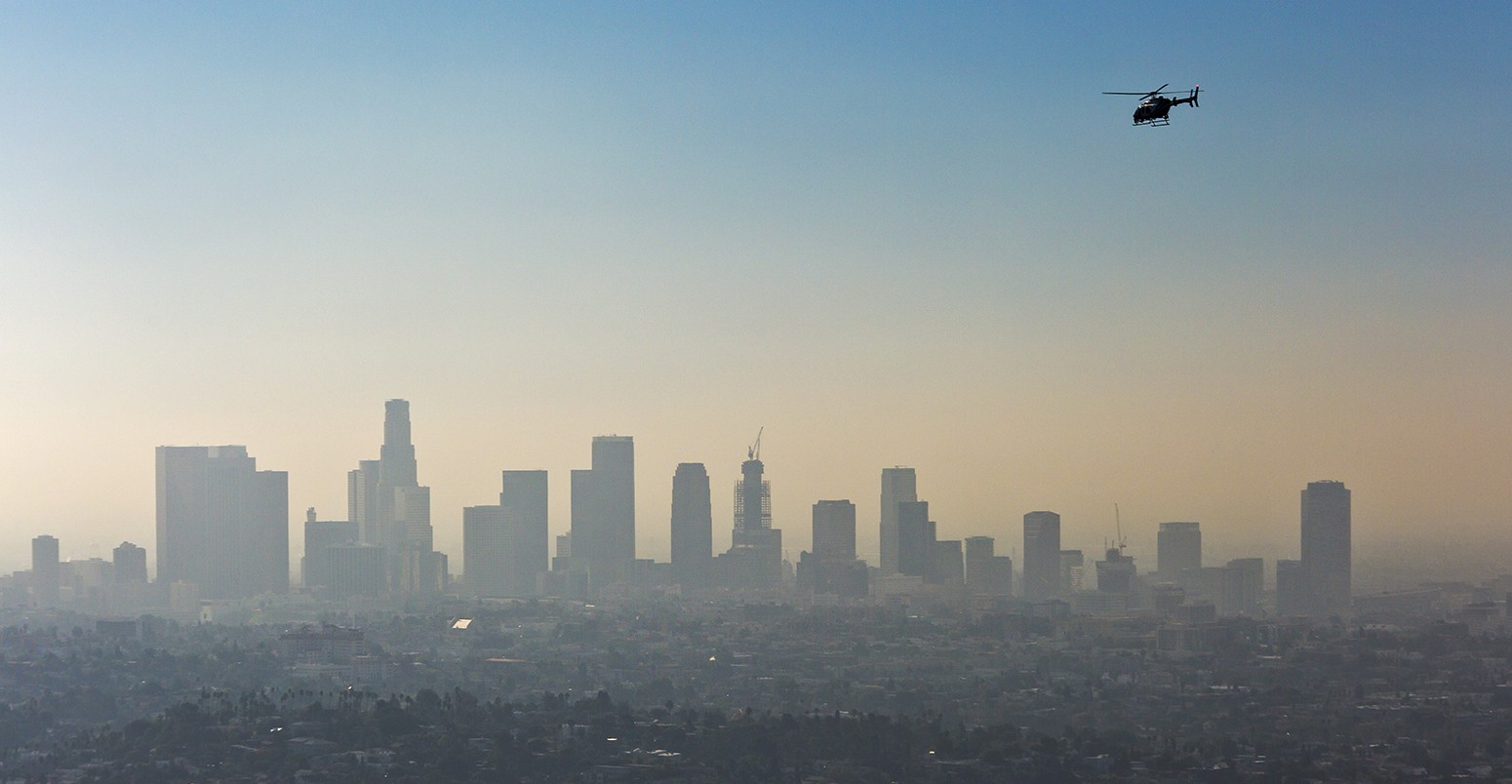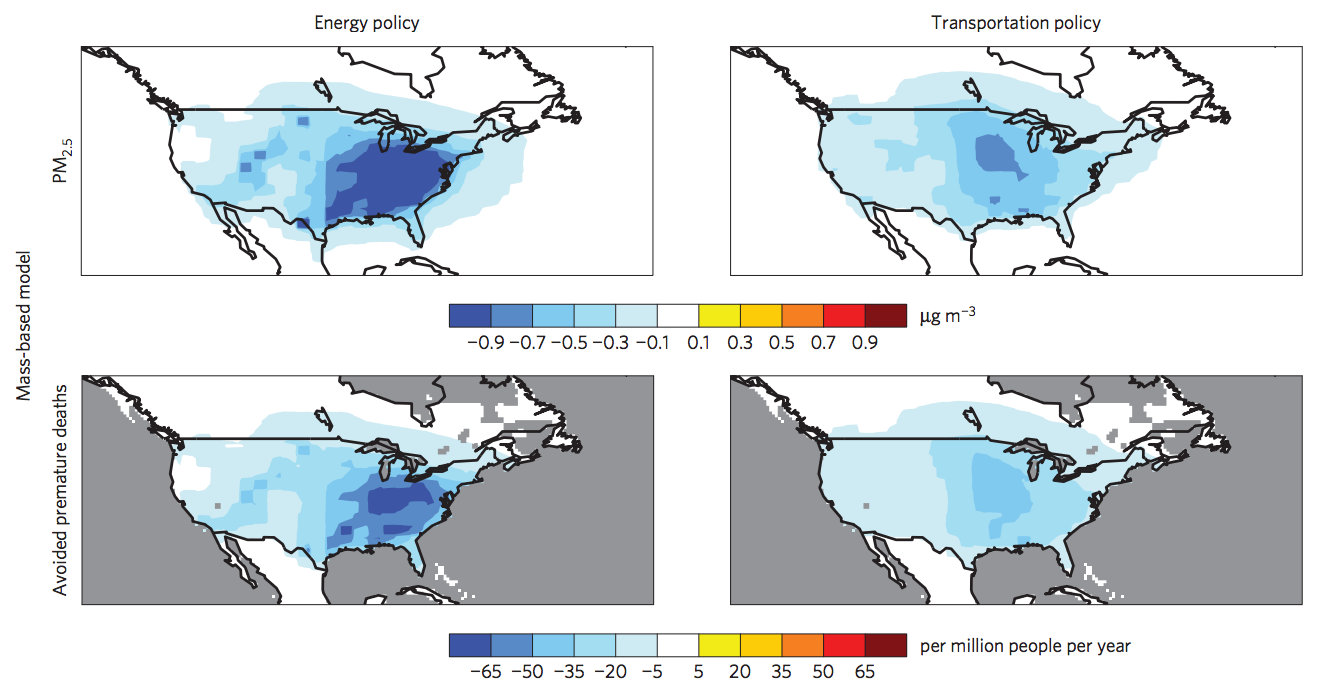
Cutting emissions could prevent nearly 300,000 US air pollution deaths
Robert McSweeney
02.22.16Robert McSweeney
22.02.2016 | 4:41pmReducing emissions in the energy and transport sectors could prevent almost 300,000 early deaths caused by air pollution in the US by 2030, a new study says.
The researchers estimate that saving these lives could benefit the US economy to the tune of $250bn per year – more than it would cost to put the policies in place.
Once you include the benefits of emissions cuts for reducing global climate change, these economic gains “roughly quintuple”, the researchers say.
Premature deaths
Air pollution in the US causes more than 200,000 early deaths every year. That’s roughly equal to the number of Americans who die from diabetes, Alzheimer’s or pneumonia every year put together.
The main offenders are tiny particles of soot, dirt, dust and smoke in the air – known collectively as “particulate matter”. The most hazardous to health are the “PM2.5” pollutants, so-called because they’re smaller than 2.5 micrometres across – about one thirtieth of the average width of a human hair.
Prof Drew Shindell, professor of climate sciences at Duke University and lead author of the new Nature Climate Change study, explains to Carbon Brief:
These particles, because they are very small, penetrate deeply into the lungs when inhaled and there, lead to increased risk of respiratory and cardiovascular diseases and lung cancer.
The study also considers a second pollutant – ozone. While the ozone layer many miles up in the Earth’s atmosphere protects us from the sun’s ultraviolet rays, ozone at ground-level is toxic to breathe, says Shindell. Ozone can irritate the throat, inflame the linings of the lungs, and worsen asthma and bronchitis.
Emissions from power stations and car exhausts are major sources of PM2.5, which is produced when fossil fuels are burnt. In addition, some of the gases they produce, such as nitrogen oxides and carbon monoxide, react with sunlight to form ozone.
The study estimates that hundreds of thousands of deaths from air pollution could be avoided if the US moved towards renewable energy and greater use of electric vehicles and trains.
2C limit
In its submission to the UN ahead of the Paris climate summit in December last year, the US laid out plans to cut greenhouse gas emissions over the coming decades. To be consistent with a global temperature rise of no more than 2C above pre-industrial levels, as laid out in the Paris agreement, the US is committed to reducing emissions by “80% or more by 2050”.
The researchers look at how the reduction in emissions necessary to stay below 2C could be achieved with energy and transport policies. They come up with “clean energy” and “clean transportation” policies where emissions are reduced by 63% and 75%, respectively, compared to a business-as-usual scenario.
They then simulate the air pollution and health benefits of these policies. Their results suggest the clean energy policy would prevent around 175,000 premature deaths from air pollution by 2030, and around 22,000 deaths per year after that. The clean transportation plan could save approximately 120,000 deaths, the paper says, with 14,000 annually in the years that follow.
The figure below shows where in the US the benefits would be felt most keenly. The left-hand maps show the benefits under the clean energy policy, and the right-hand maps show the same for the clean transportation policy. The darker the blue shading, the bigger the benefit to air quality (upper maps) and lives saved (lower maps). It’s worth noting that the map expresses the results in deaths avoided per million people per year, rather than just the total number of deaths prevented.
The benefits for air quality and avoided early deaths are more pronounced in the eastern half of the US, explains Shindell:
That’s almost entirely because there are more pollution sources – power plants, industries and vehicles – in the eastern half.

Reduction in PM2.5 air pollution (upper maps) and premature deaths (lower maps) as a result of implementing a clean energy policy (left-hand maps) and clean transportation policy (right-hand maps). Findings are shown as annual figures from 2015 to 2030, with dark blue shading indicating the largest reductions. Source: Shindell et al. (2016).
While the US would feel the benefit of cutting air pollution, the positive effect would also be felt more widely. As air pollution can be carried to across the world by the wind, cutting emissions in one country can therefore benefit the health of another.
For PM2.5, around 9-11% of the benefits would be felt in other countries, the researchers say, while for ozone this is as high as 67-74%. China and India in particular gain from lower US pollution, Shindell says, mainly because the size of the populations at risk in those countries is so large.
Higher priority
Preventing premature deaths in the US could save their economy $250bn per year, the paper estimates, which is over and above the costs of implementing the clean energy and transportation policies.
When the researchers include the longer-term benefits of reducing global climate change, the overall benefits “roughly quintuple,” the study finds. And these figures don’t include reduced medical spending or lost productivity, the paper adds:
For example…the clean energy and transportation policies together could prevent ∼29,000 asthma attacks in children under 18 requiring emergency room visits and ∼15,000,000 lost adult workdays each year.
The findings show how that moving to cleaner energy and transport have immediate health benefits for the US, in addition to the longer-term benefits for the global climate, says Shindell.
Realising the size of these benefits will hopefully mean people place a higher priority on cutting emissions, he adds.
Main image: Downtown Los Angeles with an inversion layer of smog.
Shindell, D. T. et al. (2016) Climate and health impacts of US emissions reductions consistent with 2C, Nature Climate Change, doi:10.1038/nclimate2935.

